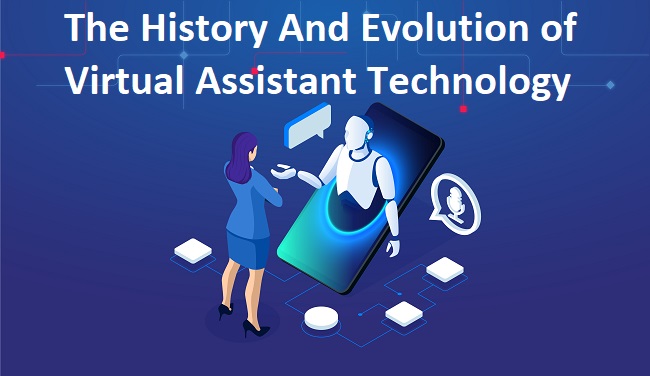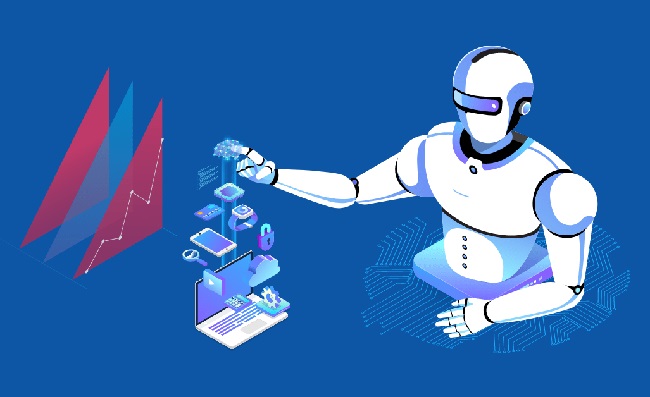Everyone needs some help, but in the past, having an assistant was reserved for specialists and executives. Today, everyone has access to at least some sort of virtual assistant.
Virtual assistants are more available than ever, whether it’s a virtual assistant app, a chatbot, or a remote worker helping you with administrative and scheduling tasks.
Still, how do we get here?
These digital assistants didn’t just come from nowhere. Also, where did these remote virtual assistants come from, and which technologies allowed them to get involved in this field. Lastly, what about the AI and NLP?

If you’ve ever wondered about these things, here are a few facts you should know about The History And Evolution of Virtual Assistant Technology (including recent history).
Read Also:
1. Early Concepts
To save human labor, early programmers experimented with the IFTTT concept. In their mind, if one request repeats over and over again, then programming a platform to resolve it automatically will save a lot of time.
Even if the program fails to resolve the problem, the issue will then be directed to an actual customer support representative, and, in this way, an algorithm in question will serve as a sort of triage system. These early platforms were quite rudimentary, and passing the Turing test was fairly simple.
This also created a pitfall that many chatbot and virtual assistance developers fell into – namely, some of them got so obsessed with the Turing test that they put too much effort into this and not enough into the core tasks that the platform was supposed to do.
This is why some of these early chatbots were just that – chat bots. Another thing worth mentioning is that some of these earliest virtual assistants, like ELIZA or PARRY, took decades to evolve into a better version or were completely abandoned soon after.
This is a natural phenomenon where, during the early development stages, technology advances slowly in a matter of decades, while once it picks up, you have a new, upgraded version every few months.
2. Virtual assistant vs. VIRTUAL assistant
A rapid technological advancement created extra confusion. Today, when you say a virtual assistant, it’s unclear what you’re addressing – an assistant working remotely or Software (an AI).
The truth is that most companies use both, making things even harder to coordinate. This is also made more difficult because the best virtual assistant leverages all the technology available to them, even chatbots and AI assistants.
The bottom line is the improvement of the service, and everything else must be subjected to it. The concept of remote work is nothing new, but in the past, people refused to hire virtual assistants because they wouldn’t have someone to help them with many real-life tasks (usually involving delivery).
Today, all it takes is a simple App interaction for a boss to get their coffee or clothes picked up from dry cleaning. Schedules are managed in the cloud, so making updates and keeping up with changes happens automatically and intuitively.
They can even help with regular maintenance with the help of remote desktop software.
Because of this, when we speak about the advancements in virtual assistant technology, it’s also important to include technology used by virtual assistants. Here, we’re discussing various platforms and services that could help these freelance, remote assistants do a better job.
3. Private vs. commercial use
With the help of platforms like Alexa and Siri, the concept of private assistant became something that’s not just reserved for the CEOs of massive conglomerates. Suddenly, anyone could have an assistant in their own home.
Combined with the concept of smart Homes, you could voice-activate either of these commands, which made you feel more like you have a buttler than a virtual assistant. The uses of this technology were numerous:
- Controlling smart devices: Since the majority of these platforms were connected to the grid, a virtual assistant could control these devices for you. All you had to do was issue a command and it would soon be executed.
- Automation of tasks: Another thing you could do is make a schedule or explain an agenda to this virtual assistant, and it would do all it can to help you send the message across. For instance, you could task it with turning off lights when everyone’s off to bed or program it to start your sprinklers at the exact time and temperature for optimal growth. As such, this does more than just make things more comfortable; it also increases your resource efficiency, potentially even saving quite a bit of money.
The bottom line is that, in the past, a personal assistant was an expensive commodity. Then again, so was a personal computer, and now almost everyone has an even stronger device in their pocket.

4. Modern AI and NLP
This last year was definitely the biggest in AI and NLP research history. This means these language algorithms (NLP- natural language processing) can now interpret human language similarly to how humans do it.
The key thing to understand is that NLP understands context and even picks up on the language and the user’s language to understand the question fully.
This is just a simple technological concept that took a long time to mature fully, but with the amount of data and a sophisticated algorithm, it’s now here to stay. Even more importantly, it’s hard to find a modern analytical tool that doesn’t boast, at least some kind of AI-based technology or concept.
Now, since these Tools can understand language better than ever before, issuing commands shouldn’t be a problem. Their programmability makes them incredibly dependable and efficient.
Most importantly, and to tie it up with something we’ve discussed early on, these tools can easily pass the Turing test. In other words, you don’t have to use them just internally but can leverage their potential in the outreach field, as well.
Read Also:
Wrap up
Assistants help save time and take on some of your chores. As long as they can successfully do that, asking additional questions is unnecessary. Sure, this trend had a long development journey, but the need for this predates the Internet by several millennia. All that modern technology provided was the means to an end.




















